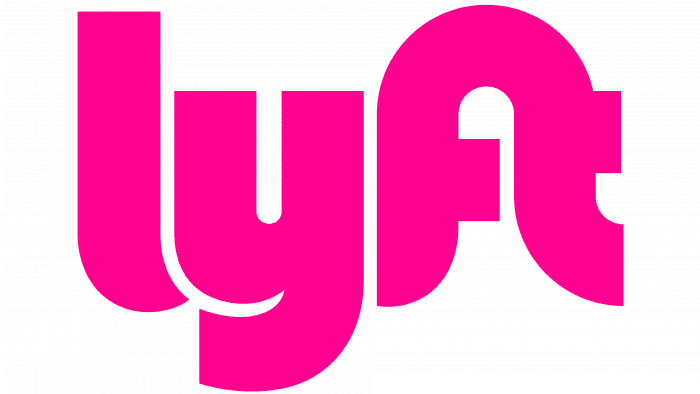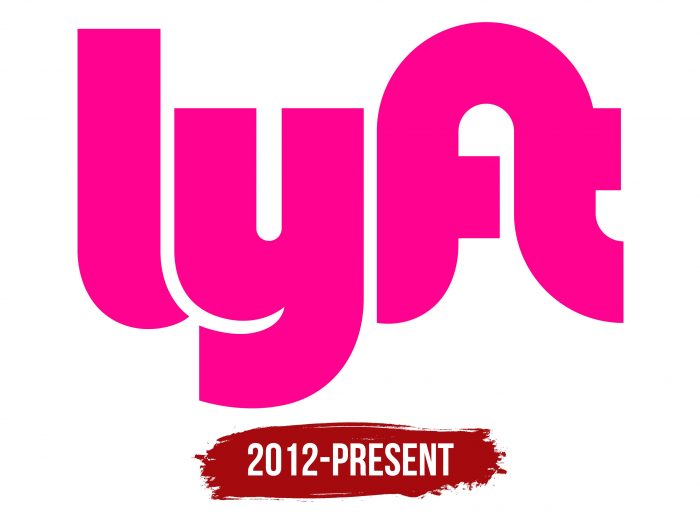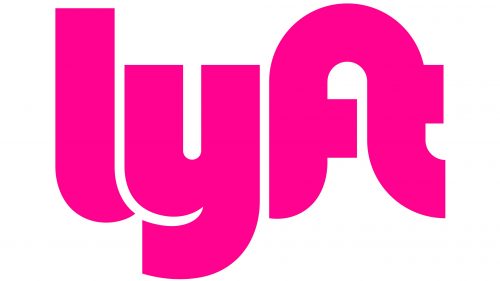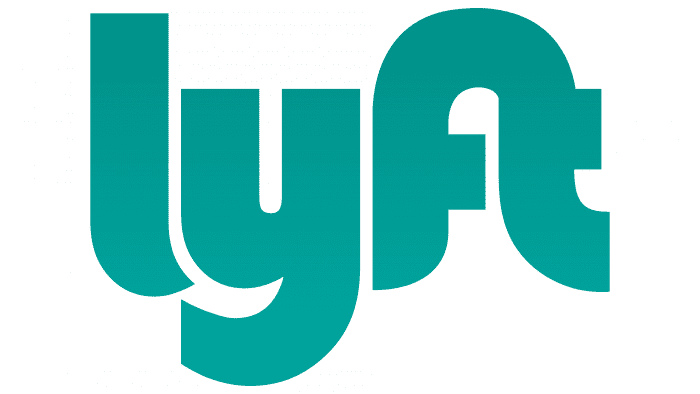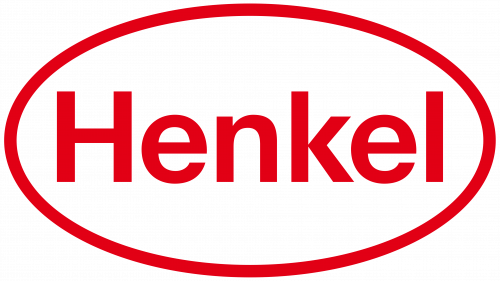The emblem’s main theme is roads, intersections, and turns. The Lyft logo indicates a quick way to find a carrier to pick you up. The sign focuses on exclusivity and convenience for program participants.
Lyft: Brand overview
| Founded: | June 9, 2012 |
| Founder: | Logan Green, John Zimmer |
| Headquarters: | San Francisco, California, U.S. |
| Website: | lyft.com |
Meaning and History
The rebranding affected the company’s identity: it wanted to position itself as a trendy and fun alternative to the usual taxi. A major player in the transport market decided to stand out from the competition with a comical logo – a bubble font’s pink inscription.
Color selection is another important part of Lyft marketing. All the drivers offering their services attached a pink mustache to the car’s front bumper. The idea came from Green and Zimmer’s longtime friend Ethan Eyler, who traded a fluffy mustache to decorate cars.
What is Lyft?
This vehicle rental company ranks second in ridesharing in the United States. It also provides taxi services and food delivery. The brand adheres to a dynamic pricing scheme, setting fees within local markets based on supply and demand. The headquarters is located in San Francisco, California.
2012 – today
The Lyft logo embodies brightness, friendliness, and informality, making it stand out from competitors in the transportation industry. Unlike the typically serious and “aggressive” emblems of other services, Lyft took a completely different approach, which has proven successful.
The main element of the visual mark is the bright pink “Lyft” inscription. The use of pink immediately sets the brand apart from other transportation companies. Pink is associated with friendliness, warmth, and positivity, one of the company’s primary goals. The company aimed to create a service that transports people and makes rides comfortable and enjoyable. The pink color makes passengers feel at ease and relaxed during their ride.
The logo’s font features smooth, rounded letters, adding friendliness to the overall design. This font suggests a casual, easygoing interaction with the brand, which is especially important for creating a comfortable atmosphere during rides. The letters appear “thick” and “puffy,” enhancing the sense of softness and safety.
Early logo versions included an element with pink mustache-like accents, but it didn’t stick. However, this playful and unusual approach allowed Lyft to establish its friendly and positive positioning in the market. By the time the final version of the logo retained only the text without additional elements, the company had already built a reputation as a “soft” and approachable brand, which is crucial for customers.
From the start, the company wanted to differentiate itself from competitors and create an atmosphere of friendship and ease. Lyft aimed to attract more women as drivers and passengers, focusing on comfort and trust. This played a key role in their success, as choosing an informal and non-aggressive design underscores the brand’s accessibility for everyone.
Lyft: Interesting Facts
The company began as a ride-sharing service and quickly became known for its innovative approach to city transportation.
- Early Days: The company was called Zimride in 2007 and focused on long carpool trips. In 2012, it shifted to offering shorter city rides under its new name.
- Gig Economy Role: The business played a significant role in the gig economy, enabling many people to earn money by driving on their schedule.
- Tipping Feature: In 2012, it became the first ride-sharing platform to allow passengers to tip drivers directly through the app, which has since become standard.
- Eco-Friendly Goals: The company has committed to using all-electric or zero-emission vehicles by 2030 to reduce pollution and combat climate change.
- More Than Rides: Besides cars, the service offers bike and scooter sharing, aiming to become a comprehensive solution for urban transportation.
- Helpful Partnerships: The business collaborates with healthcare providers and public transit systems to ensure people can access rides when needed, such as for doctor’s appointments or connecting with public transport.
- Membership Program: The company offers a premium service that provides discounts, priority pickups at airports, and easier cancellations to enhance customer loyalty.
- Safety First: The app prioritizes rider safety and includes emergency assistance, real-time ride tracking, and thorough driver background checks.
Font and Colors
The taxi aggregator pitted itself against rivals, most notably Uber, when it adopted a bright pink wordmark. In doing so, he made a splash, as customers were drawn to the light-hearted and easy-going atmosphere at the heart of Lyft’s concept. Looking at the fluffy mustache and funny inscription, people could feel safe even in the same car with a stranger.
All letters in “Lyft” are lowercase, including the first “l.” The typeface looks atypical: “f” and “t” merge into an abstract shape that smoothly curves from above and goes down. Horizontal strokes appear as symmetrical stripes. This merger symbolizes the transport service’s main goal: to transport passengers from one point to another quickly and without problems. The original lettering style and bubble font represent Lyft as a fun alternative to the austere and authoritative Uber.
The legendary logo is pink (# FF00BF). Depending on the visual context, the background is traditionally white but can be black (# 11111F). The vibrant palette makes the word mark recognizable, so customers will immediately notice it.
